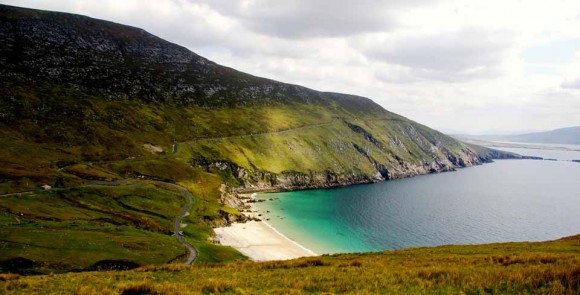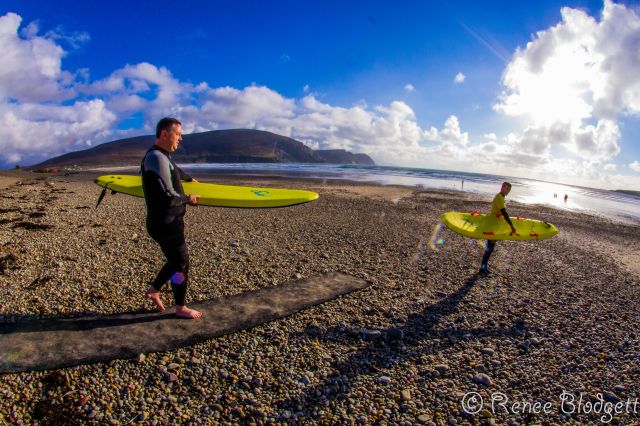I recently had an opportunity to visit Achill Island in County Mayo, the largest island off the west coast of Ireland. It’s small with only a population of 2,700, which is of course massive by some standards (take Mont Saint Michel in northern France as a great case in point).
We got to Achill via the Michael Davitt Bridge from the mainland which is between the villages of Gob an Choire (Achill Sound) and Poll Raithní (Polranny). It is also less than an hour’s drive from Westport, where I spent a few days with entrepreneurs from around the world for the very first Surf Summit, an event where technology, business, surfing and adventure meet. Additionally, there are other nearby centers, including the villages of Keel, Dooagh, Dumha Éige (Dooega) and Dugort. And, villages they are in the truest sense of the word, one of the things that makes Ireland so charming and magical. From the skies and light to the beaches and the land itself. Peat bog is renowned in Ireland so it should be no surprise that the island is 87% peat bog.
In and around Achill Island, there is a parish, a Gaelic football pitch and two secondary schools at Poll Raithní. The parish of Achill also includes the Curraun peninsula. On Irish culture, it is interesting to note that some of the people of Curraun consider themselves Achill people, and most natives of Achill refer to this area as being “in Achill”. There are between 500-600 native Irish speakers in Achill parish.
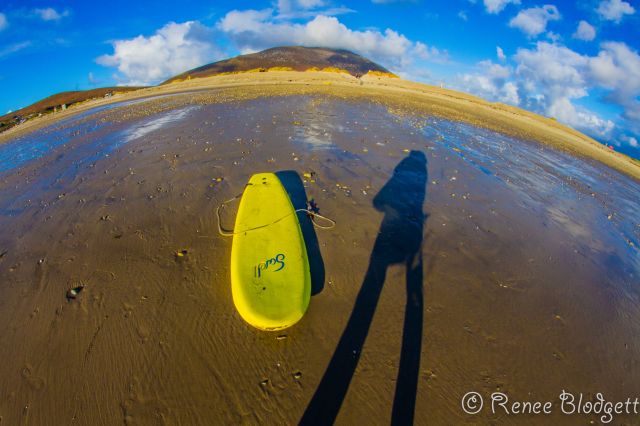
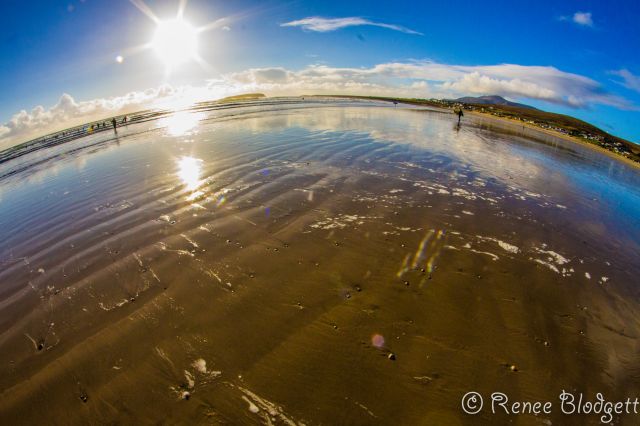
While I spent the majority of my time on Keel Beach, a popular beach on the island, other things to note in the area to do, include:
GRACE O’MALLEY’s CASTLE: Grace O’Malley’s Kildamhnait Castle is a 15th century tower house associated with the O’Malley Clan, who were once a ruling family of Achill. Grace O’ Malley, or Granuaile, the most famous of the O’Malleys, was born on Clare Island around 1530. Grace became a fearless leader and gained fame as a sea captain and pirate and was even reputed to have met with Queen Elizabeth I in 1593.
ACHILL MISSION: one of Achill’s most famous historical sites is that of the Achill Mission or ‘the Colony’ at Dugort. In 1831, the Church of IrelandReverend Edward Nangle founded a proselytising mission at Dugort. The Mission included schools, cottages, an orphanage, an infirmary and a guesthouse. Nangle expanded his mission into Mweelin, where a school was built. The Achill Mission began to decline slowly after Nangle was moved from Achill and was finally closed in the 1880s.
THE RAILWAY: in 1894, the Westport – Newport railway line was extended to Achill Sound. The train station is now a hostel. The train provided a great service to Achill, but it also fulfilled an ancient prophecy. Brian Rua O’ Cearbhain had prophesied that ‘carts on iron wheels’ would carry bodies into Achill on their first and last journey.
KILDAMHNAIT: Kildamhnait on the south east coast of Achill is named after St. Damhnait, or Dymphna, who founded a church there in the 16th century. There is also a holy well just outside the graveyard. The present church was built in the 1700s and the graveyard contains memorials to the victims of two of Achill’s greatest tragedies, the Kirchintilloch Fire (1937) and the Clew Bay Drowning (1894). Below, the remains of Kildamhnait Castle, or Grace O’Malley’s Castle which dates back to the 15th-century.
THE MONASTERY: in 1852, Dr. John McHale, Archbishop of Tuam set aside land in Bunnacurry for the building of a monastery. A Franciscan Monastery was built which, for many years provided an education for local children. The ruins of this monastery are still to be seen in Bunnacurry today.
VALLEY HOUSE: The historic Valley House is located in The Valley, near Dugort in the north-east of Achill Island. The present building sits on the site of a hunting lodge built by the Earl of Cavan in the 19th century. Its notoriety arises from an incident in 1894 in which the then owner, an English landlady named Agnes McDonnell, was savagely beaten and the house set alight, allegedly by a local man, James Lynchehaun. He apparently escaped custody and fled to the United States, where he successfully defeated legal attempts by the British authorities to have him extradited to face charges arising from the attack and the burning of the Valley House.
DESERTED VILLAGE: Close by Dugort, at the base of Slievemore mountain lies the Deserted Village where there are approximately 80 ruined houses. The houses were built of unmortared stone, which means that no cement or mortar was used to hold the stones together. Each house consisted of just one room and this room was used as kitchen, living room, bedroom and even stable. If one looks at the fields around the Deserted Village and right up the mountain, one can see the tracks in the fields of ‘lazy beds’, which is the way crops like potatoes were grown. In Achill, as in many areas of Ireland, a system called ‘Rundale’ was used for farming. This meant that the land around a village was rented from a landlord. This land was then shared by all the villagers to graze their cattle and sheep.
At Ailt, Kildownet, you can see the remains of a similar deserted village, which was deserted in 1855 when the tenants were evicted by the local landlord so the land could be used for cattle grazing. The tenants were forced to rent holdings in Currane, Dooega and Slievemore.
BEACHES: there are numerous beaches on Achill Island. Ones worth highlighting are Dooega – and Camport Bay, which lie on Achill’s Atlantic Drive, a spectacular coastal road that overlooks the Atlantic Ocean along the southern edge of Achill Island. Dooega itself was one of the last native language speaking villages on Achill, and is still part of the Gaeltacht (a designated Irish language speaking area). During the summer an activity holiday centre is available for children with all lessons conducted in the Irish language.
Dugort: this beach is on the north side of Achill Island, offers two Blue Flag beaches. This historic village was the first area on Achill to embrace tourism as the island’s first hotel (the Achill Mission Hotel, later the Slievemore Hotel) was established here in 1840. It was to Dugort that the Irish artist Paul Henry was first taken when he visited Achill in 1910, though he quickly sought the less developed (at the time) village of Keel as his base. Dugort’s two Blue Flag beaches look out onto Blacksod Bay and the Belmullet Peninsula is clearly visible to the north. The larger beach, the Golden Strand, is also known as Barnyagappul Strand.
Keem Beach is set in a magnificent horseshoe bay with steep sides to the left and right, and a stepped valley to the back of the beach. This sheltered bay is said to have been blessed by St. Patrick during his stay on Croagh Patrick. According to folklore, St. Patrick looked out from the mountain and saw the golden beach at Keem and said that no-one would ever drown in its waters.
Keel Beach / Trawmore Strand is a fine sandy beach that connects the village of Keel with Dookinelly and offers fantastic views of the famous Minuan Cliffs at the eastern end of the strand. This beach is popular with watersports enthusiasts, particularly surfers who enjoy the rolling Atlantic breakers and the main reason we were there.
To the back of the sandy beach is a storm beach formed from boulders and shingle thrown onshore during storms. This barrier of rocks separates the beach from the low lying area of flat ground behind Trawmore Strand, which includes the area occupied by Achill Golf Club. This area has the status of ‘machair’, a habitat designated as an area of special scientific interest and which is confined to the west coast of Ireland from Galway to Donegal (the only other examples of machair in Europe are in Scotland). Below are some of the photos I shot on that sunny but chilly November day on my most recent trip. The light was, let’s just say….magical. Enjoy!
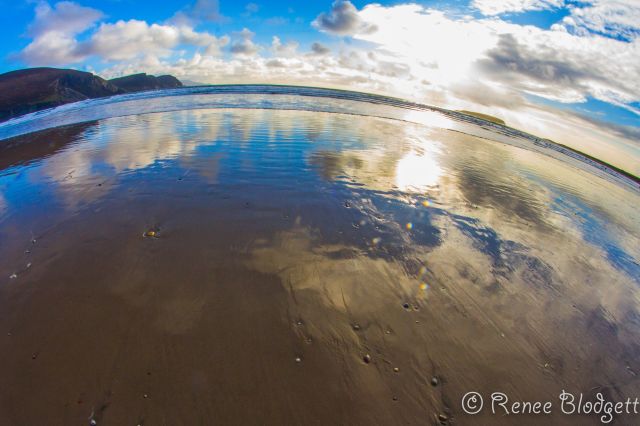
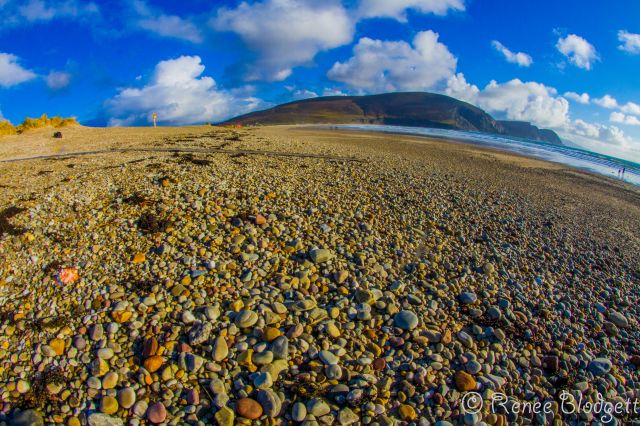
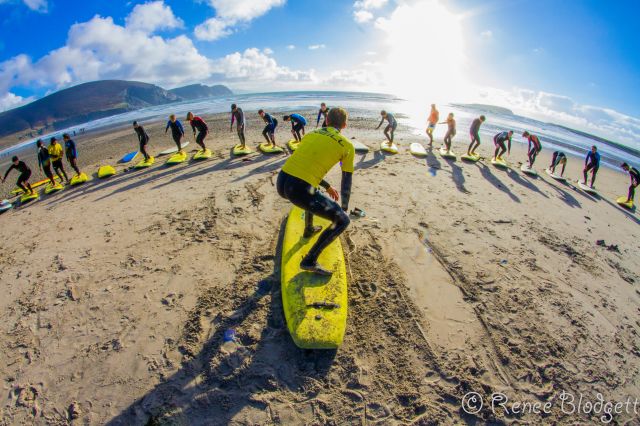

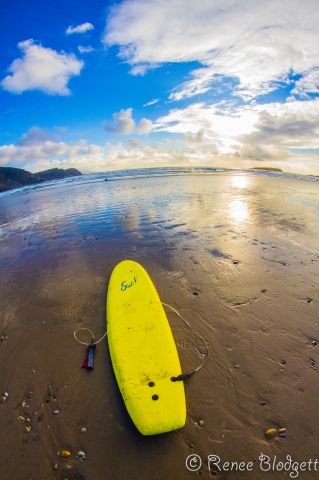
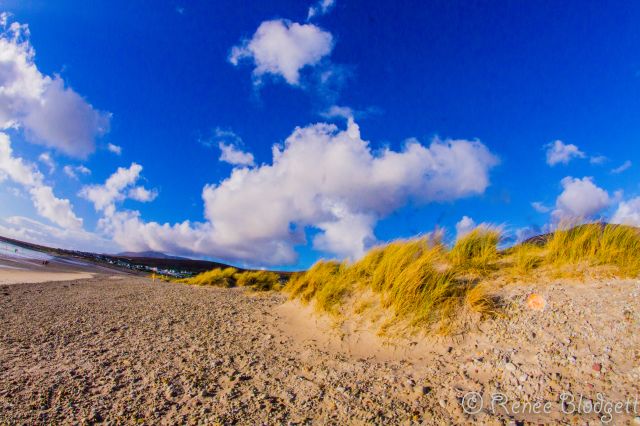
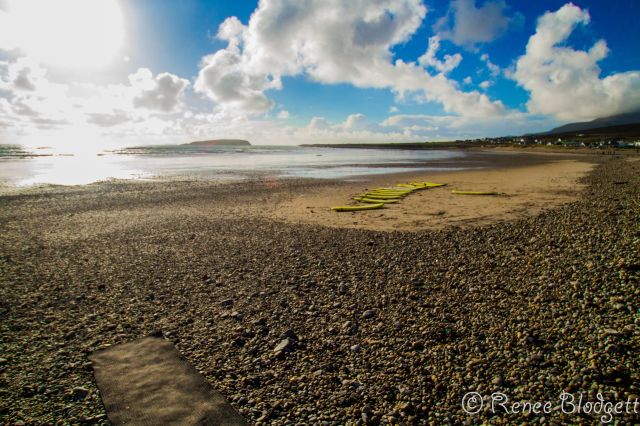
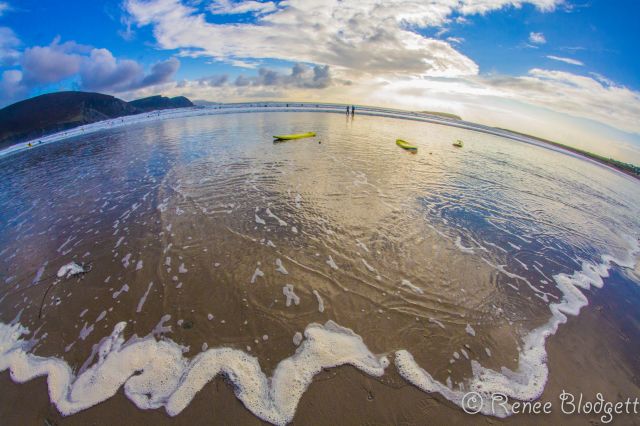
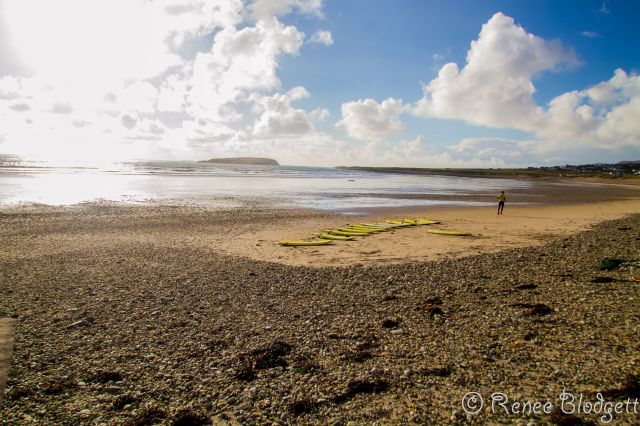
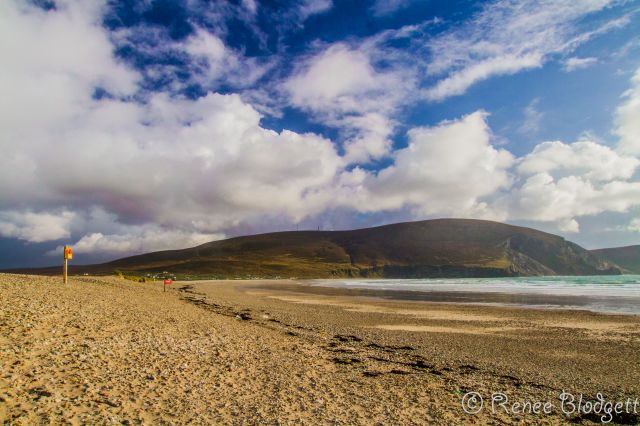
Below is just in and around the beach, very walkable even for families with small children.
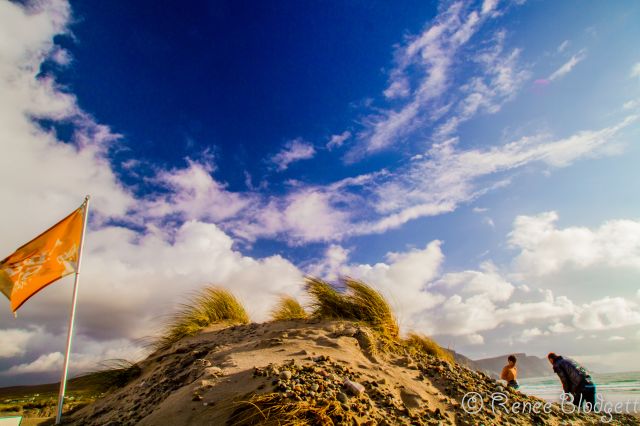
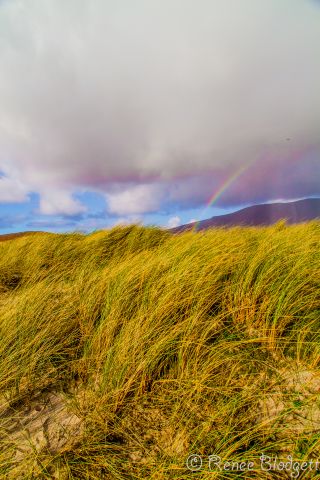
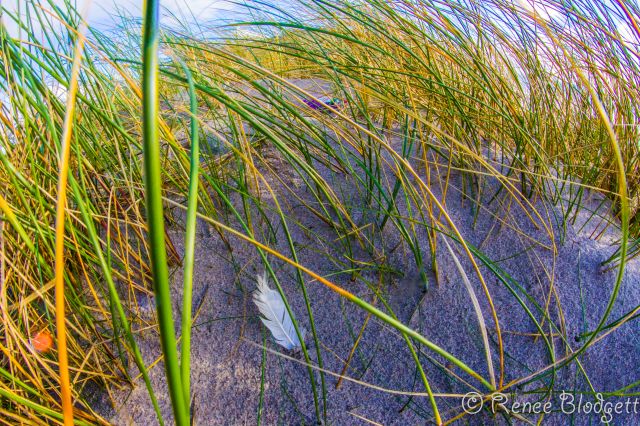
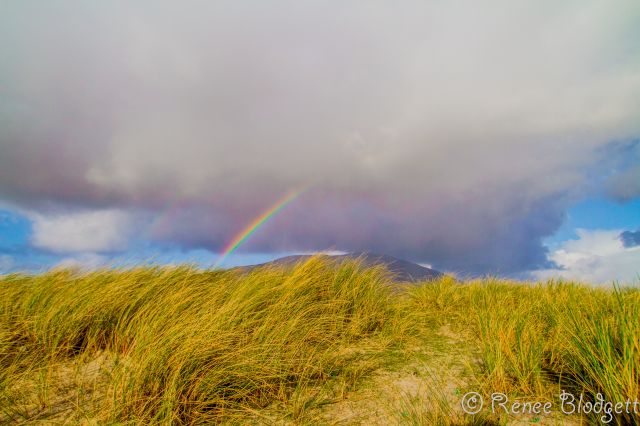

Keem Beach photo credit: Destination Westport, photo of Kildamhnait Castle from www.thefieryredheadblog.com. All other photo credits: Renee Blodgett. For more great posts and inspiration on Ireland, visit our Ireland (visit Ireland / travel to Ireland) page for coverage of other trips and adventures. See http://www.visitachill.com/ for more information on the area.

Renee Blodgett is the founder of We Blog the World. The site combines the magic of an online culture and travel magazine with a global blog network and has contributors from every continent in the world. Having lived in 10 countries and explored over 90, she is an avid traveler, and a lover, observer and participant in cultural diversity. She is also the founder of the Magdalene Collection, a jewelry line dedicated to women’s unsung voices and stories, and the award-winning author of the bestselling book Magdalene’s Journey
She is founder of Blue Soul Media and co-founder of Blue Soul Earth as well as the producer and host of the award-winning Blue Soul CHATS podcast, that bridges science, technology and spirituality. Renee also founded Magic Sauce Media, a new media services consultancy focused on viral marketing, social media, branding, events and PR. For over 20 years, she has helped companies from 12 countries get traction in the market. Known for her global and organic approach to product and corporate launches, Renee practices what she pitches and as an active user of social media, she helps clients navigate digital waters from around the world. Renee has been blogging for over 16 years and regularly writes on her personal blog Down the Avenue, Huffington Post, BlogHer, We Blog the World and other sites. She was ranked #12 Social Media Influencer by Forbes Magazine and is listed as a new media influencer and game changer on various sites and books on the new media revolution. In 2013, she was listed as the 6th most influential woman in social media by Forbes Magazine on a Top 20 List.
Her passion for art, storytelling and photography led to the launch of Magic Sauce Photography, which is a visual extension of her writing, the result of which has led to producing six photo books: Galapagos Islands, London, South Africa, Rome, Urbanization and Ecuador.
Renee is also the co-founder of Traveling Geeks, an initiative that brings entrepreneurs, thought leaders, bloggers, creators, curators and influencers to other countries to share and learn from peers, governments, corporations, and the general public in order to educate, share, evaluate, and promote innovative technologies.


